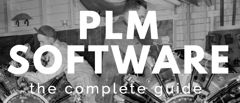
flickr/Valeriana Solaris
Most consumers probably aren’t aware of the product life cycle stages. Even though they make a conscious decision to switch from one product to another, this is more due to personal taste or simply wanting the have the latest and best, rather than an appreciation of which stage of its life cycle a product may be going through.
But if you look at the trends in key markets over the last couple of decades, even just the last few years, consumer demand for particular products can provide some very good product life cycle examples.
Product Life Cycle Examples
The traditional product life cycle curve is broken up into four key stages. Products first go through the Introduction stage, before passing into the Growth stage. Next comes Maturity until eventually the product will enter the Decline stage. These examples illustrate these stages for particular markets in more detail.
- 3D Televisions: 3D may have been around for a few decades, but only after considerable investment from broadcasters and technology companies are 3D TVs available for the home, providing a good example of a product that is in the Introduction Stage.
- Blue Ray Players: With advanced technology delivering the very best viewing experience, Blue Ray equipment is currently enjoying the steady increase in sales that’s typical of the Growth Stage.
- DVD Players: Introduced a number of years ago, manufacturers that make DVDs, and the equipment needed to play them, have established a strong market share. However, they still have to deal with the challenges from other technologies that are characteristic of the Maturity Stage.
- Video Recorders: While it is still possible to purchase VCRs this is a product that is definitely in the Decline Stage, as it’s become easier and cheaper for consumers to switch to the other, more modern formats.
Another example within the consumer electronics sector also shows the emergence and growth of new technologies, and what could be the beginning of the end for those that have been around for some time.
- Holographic Projection: Only recently introduced into the market, holographic projection technology allows consumers to turn any flat surface into a touchscreen interface. With a huge investment in research and development, and high prices that will only appeal to early adopters, this is another good example of the first stage of the cycle.
- Tablet PCs: There are a growing number of tablet PCs for consumers to choose from, as this product passes through the Growth stage of the cycle and more competitors start to come into a market that really developed after the launch of Apple’s iPad.
- Laptops: Laptop computers have been around for a number of years, but more advanced components, as well as diverse features that appeal to different segments of the market, will help to sustain this product as it passes through the Maturity stage.
- Typewriters: Typewriters, and even electronic word processors, have very limited functionality. With consumers demanding a lot more from the electronic equipment they buy, typewriters are a product that is passing through the final stage of the product life cycle.
While it’s usually left up to the manufacturers and their marketers to worry about Product Life Cycle Management and what implications the different stages might have for their business, considering actual products is a good way to show consumers the part they play in this life cycle.

